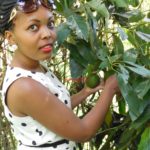 Smart agriculture has been making headlines in Kenya and around the world these last couple of months. Farming experts point out that smart agriculture, which is basically technological farming, is the only way out to feed Africa. In turn, Africa can supply the world. With the largest youthful population in the world, the youth need employment that can sustain them. And agriculture is without a doubt the key for it absorbs semi-skilled and trained alike. When this biggest population bracket joins the trade, it means a surplus for even the importers.
Smart agriculture has been making headlines in Kenya and around the world these last couple of months. Farming experts point out that smart agriculture, which is basically technological farming, is the only way out to feed Africa. In turn, Africa can supply the world. With the largest youthful population in the world, the youth need employment that can sustain them. And agriculture is without a doubt the key for it absorbs semi-skilled and trained alike. When this biggest population bracket joins the trade, it means a surplus for even the importers.
Smart agriculture refers to integrating agricultural output with climate responsiveness. This means making farming a proactive job that perfectly marries with changing weather patterns so that nothing goes to waste. When there is no rain, irrigation takes over, amongst other measures.
According to a recent Huffington Post story, Kenya can feed itself and export the surplus: with a potential to produce anything from 150,000 to 300,000 metric tons of food yearly, this means the country can export more than it does now. Currently, the nation produces a mere 9000 metric tons, which leaves 3.6 million citizens without sufficient food.
With smart farming, the largest economy in East Africa can meet local demands and also get tenfold the current KSH12 billion agricultural exports’ revenue. Here is how importers stand to benefit from this innovative farming:
- Under the government’s Climate-Smart Agriculture Strategy of 2017-2026, Kenya aims to grow a surplus that importers can enjoy, with high quality guarantee. For instance, women who form the bulk of the farming population can grow new fruit trees that offer better nutrition, at home, while serving as a source of revenue from abroad.
- Without smart farming, importing food from Kenya may become hard. In 2017, people who were food insecure in the country were 2.7 million. But through innovative farming, the country would continue being a leader in food exports in the region.
- Food imports from the country will also be high quality and disease-free. Kenya is currently partnering with the International Center for Tropical Agriculture (CIAT) and World Agroforestry Centre (ICRAF) alongside Kenya Plant Health Inspectorate Services (KePHIS), among others. These bodies intend to develop smart agriculture that is both easy to maintain and natural. This is great for importers because it reduces the chances of horticultural rejections due to the use of chemicals.
How Smart Agriculture Will Diversify Top Exports
Kenya’s leading horticultural exports include tea, cut flowers, coffee and legumes. Cut flowers brought the country $653 million in the 2015/16 financial year while legumes/fresh beans raked in $151 million.
With 127 major flower farms claiming the famous Lake Naivasha belt, importers have found a cut flower paradise that has now collectively gone into smart farming. Flowers from these farms, some of which are family growers, are now employing organic farming with little or no chemical sprays. This explains why 35 percent of all flowers coming into the EU originate from Kenya. They are natural, fresh and of high quality.
Legumes are also capturing EU and American importers courtesy of lessons farmers have learned from previous rejections. Now, family growers are employing smart farming methods, including the sustainable one of growing beans and peas in maize fields.
Intercropping reduces the need to apply commercial fertilizers: the two plants, maize with a fiber root system of growth and beans with a tap root, exchange natural minerals. A 0.5 acre of a maize-French bean farm in the Rift Valley province of Kenya can produce 3, 250 kilos in just 60 days. Upon harvest, it will have already fixed nitrogen into the soil for the next crop.
Traditional corn producing areas like Mt. Elgon and Cherangany Hills in Western Kenya contributed around 54 tons and 48 tons of garden peas and mange-touts, respectively in 2016. This was through such new, friendly farming methods as intercropping.
Finally….
You can be among those who import around 125,000 tons of cut flowers, per year, by contacting a company like Selina Flowers! We deal only with family growers who practice sustainable and traditional agriculture. Or else, you can watch the smart farming trends in Kenya which we are also checking out blossom into making the country a food basket for traders in Europe, Asia and North America.

